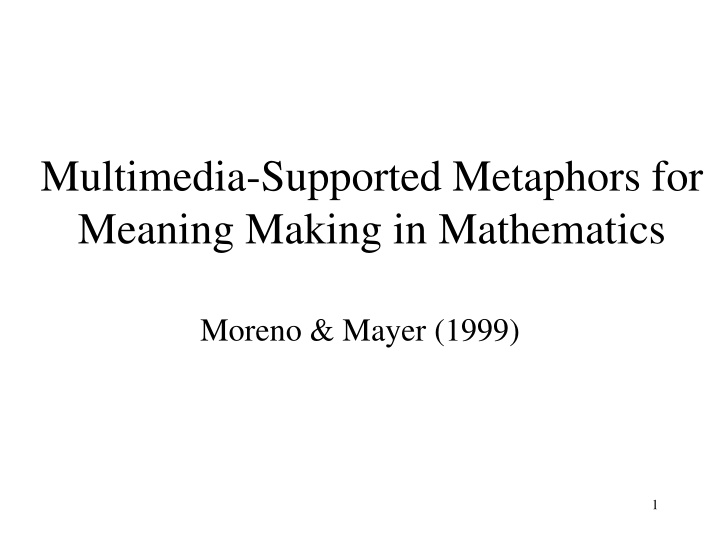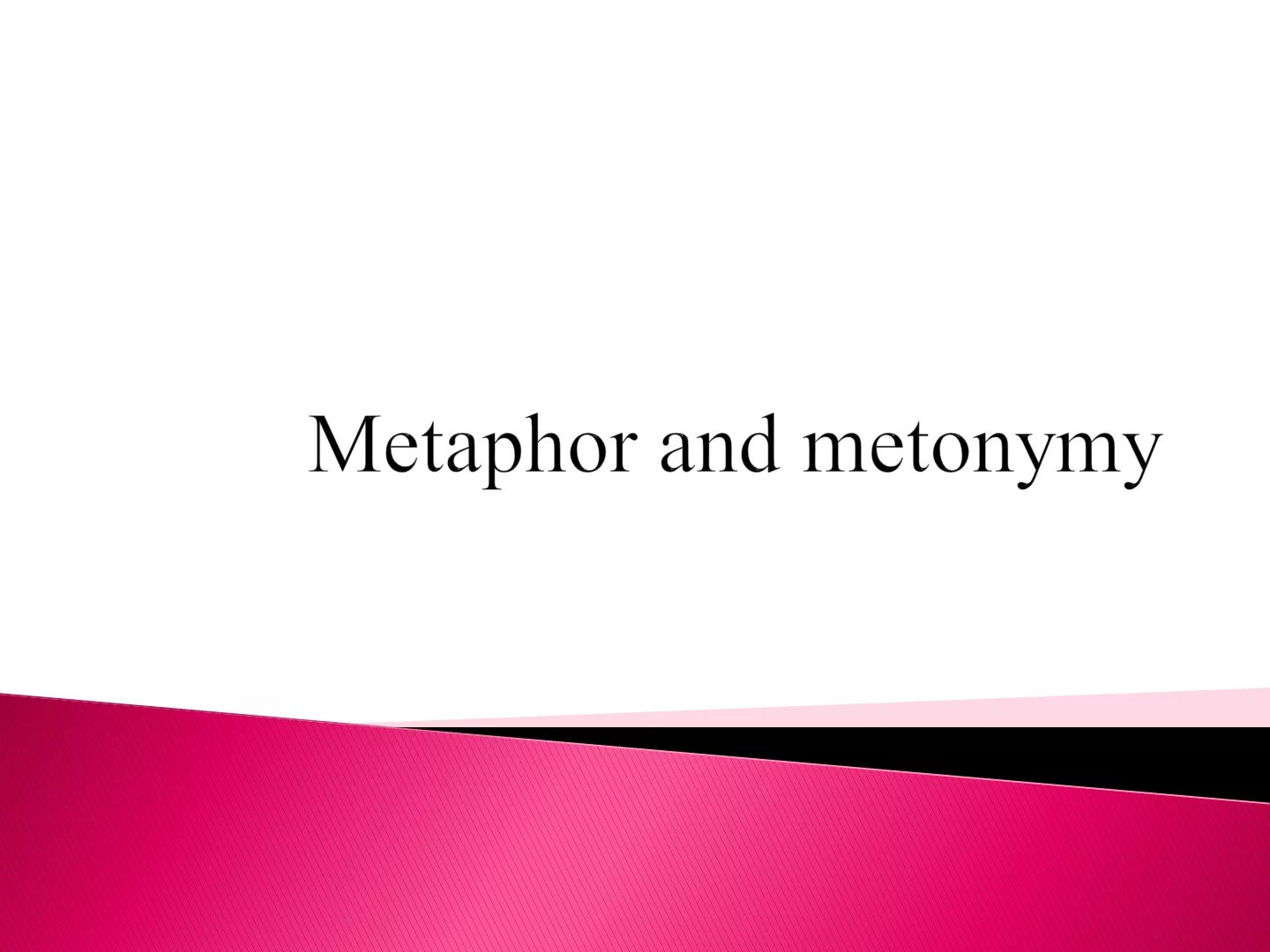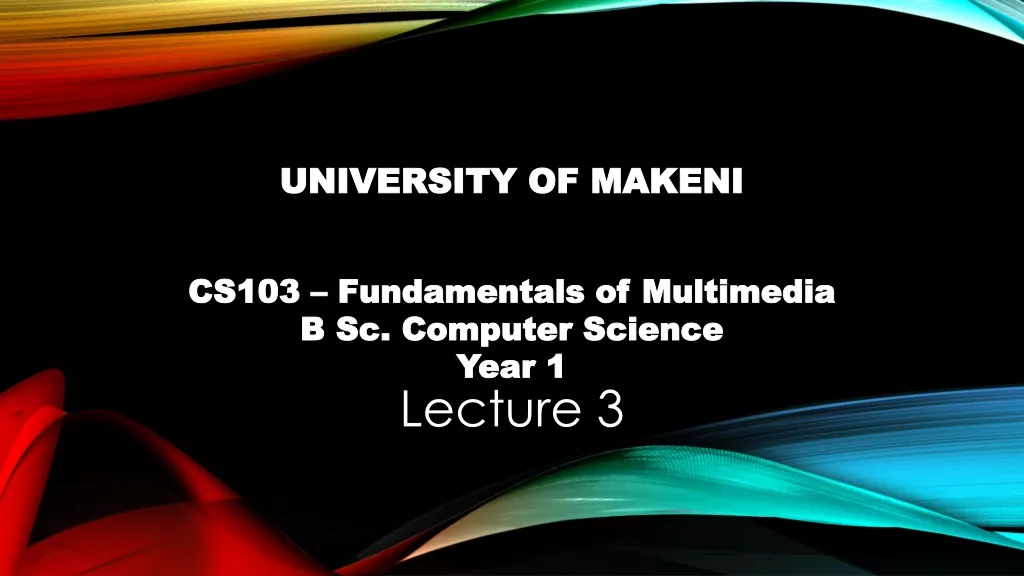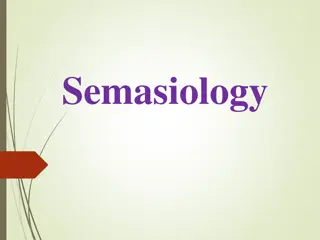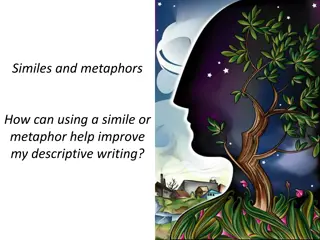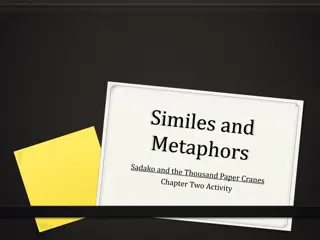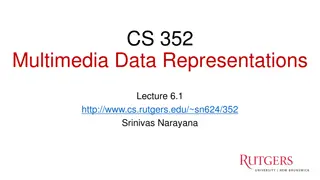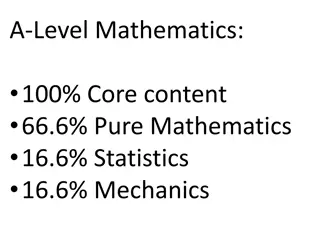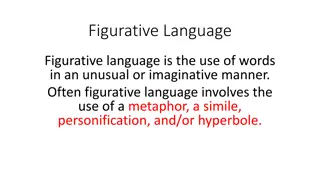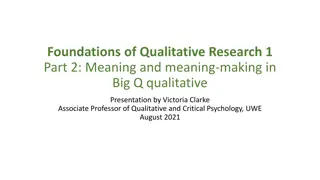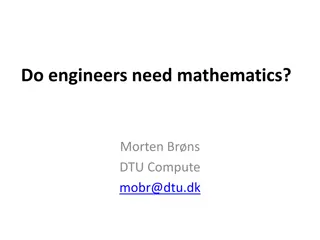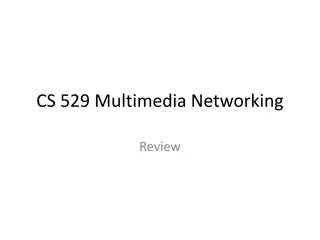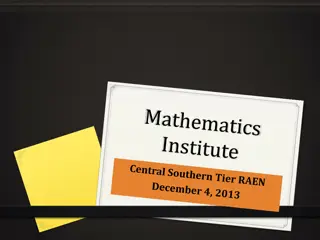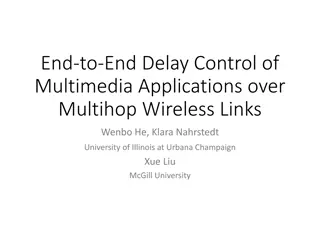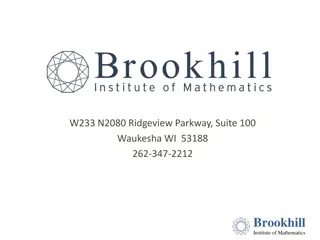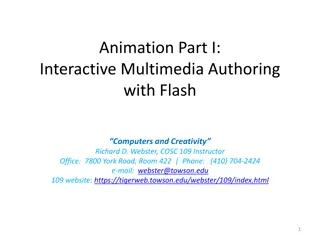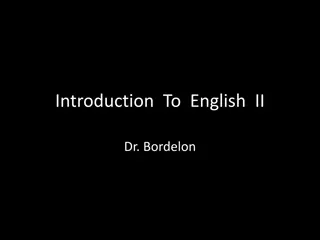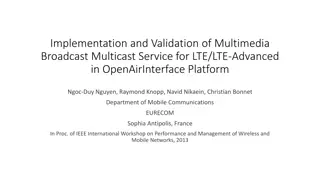Multimedia-Supported Metaphors for Meaning Making in Mathematics
In this study, the use of multimedia-supported metaphors in mathematics education is explored, focusing on the impact of metaphorical reasoning on young learners' mental model construction. Various concepts such as computational procedures, metaphorical cognition, and instructional methodologies are discussed in relation to multimedia learning environments. The research question addresses how multimedia can enhance the development of appropriate mental models in mathematics education.
Download Presentation

Please find below an Image/Link to download the presentation.
The content on the website is provided AS IS for your information and personal use only. It may not be sold, licensed, or shared on other websites without obtaining consent from the author.If you encounter any issues during the download, it is possible that the publisher has removed the file from their server.
You are allowed to download the files provided on this website for personal or commercial use, subject to the condition that they are used lawfully. All files are the property of their respective owners.
The content on the website is provided AS IS for your information and personal use only. It may not be sold, licensed, or shared on other websites without obtaining consent from the author.
E N D
Presentation Transcript
Multimedia-Supported Metaphors for Meaning Making in Mathematics Moreno & Mayer (1999) 1
Learning Computational Procedures RULE BUILDING MODEL BUILDING Application of general rules to problems From drill & practice to production rules Abstract and disembodied reasoning Mental model construction of problem situations From Gestalt to situational contexts Making connections between new info and existing models 2
Metaphor as an Aid to Math Cognition Image-based (modern) vs. abstract (traditional) reasoning Conceptual system metaphorical in nature? Metaphorical reasoning fundamental way of human thinking? Analogical reasoning foundational to learning? 3
THE RESEARCH QUESTION How can multimedia environments introduce metaphors to promote the construction of appropriate mental models in young learners? 4
The Number Line Central conceptual structure necessary for children s arithmetic learning Grounding metaphor, arithmetic-is-motion, helps students relate mathematical ideas to everyday experiences Effective concrete manipulative makes sense to students 5
Instructional Methodology Single representation (SR) - learning arithmetic procedure with symbolic form only (without explanations) Multiple representation (MR) - learning arithmetic procedure by seeing and coordinating symbolic with visual and verbal explanations (MULTIMEDIA LEARNING) 6
Multimedia Learning: A Conflict? MR Theory: teaching with more representations facilitates learning by providing several mutually referring sources Cognitive Load Theory: mental integration of multiple sources of information may generate a heavy cognitive load detrimental to learning 7
Predictions Based on MR Theory: MR students show greater improvement than SR students Based on Cognitive-Load Theory: SR students show greater improvement than MR students Reconciled theories: MR learning more effective for students with automated basic arithmetic skills (cognitive space freed for making connections among visual, verbal, and symbolic representations) 8
Measures of Learning Pretest to posttest gains Pattern of improvement across four trials Changes in strategies used to generate incorrect answers between pretest and posttest 9
EXPERIMENT 1 Participants 60 sixth grade students Uninstructed in signed addition or subtraction 90th percentile of math achievement Design SR and MR groups divided into high and low achievers Pretest and posttest have easy and difficult problems 10
EXPERIMENT 1 Materials Pretest and Posttest Identical 18 problems (including 2 transfer types with zeros) Difficulty level determined by pretest performance median Computer-based materials 4 training sessions 16 problems/session in 2 doses Log files for each session 11
Experiment 1 Procedure Paper-and-pencil pretest; at or below median is low-achieving Four training sessions over two weeks Groups SR group: symbolic representation and feedback MR group: symbolic as well as verbal and visual (dynamic) representation and feedback Paper-and-pencil posttest 12
Experiment 1 Scoring Gain score overall for each student Gain score session-to-session for each student Strategy change Negative bias bug: negative sign interpreted as subtraction operator. Ex. -8 + - 1 = 7 or -7 Conceptually good bug: negative sign not perceived as subtraction operator. Ex. -8 + - 1 = 9 13
Results: Overall Gain Scores Mean difference of SR and MR groups not significant Re-analyze as treatment x problem type: most room for improvement on difficult problems? Significant Interaction! 14
Further Analysis of Gain Scores Previous results support MR theory Hybrid theory predicts MR superior to SR for high achievers MR group > SR group only for high achieving students 15
Results: Session-to-session gain scores MR Theory: MR group faster than SR group Cognitive Load Theory: SR group faster than MR group Hybrid Theory: MR group faster only for high achievers Results consistent with a hybrid theory: significant difference in learning rate for high but not low achievers dependent on treatment group. 16
Results: Strategy Change Group x test interaction MR group reduces negative bias significantly more than SR group 17
Experiment 2 Experiment 1: results consistent with a hybrid theory. MR is more effective than SR when learner s working memory not overloaded with instructional presentation. Experiment 2: role of cognitive load in learning with MR For low and high spatial ability For low and high memory span 18
Experiment 2 Method Participants from same population Pretest, posttest, MR sessions from Experiment 1 Cognitive Tests Spatial ability: cube comparisons and paper folding Memory span: auditory letter span and number comparison 19
Results High spatial ability students outperform significantly low spatial ability students when presented with MR training (consistent with hybrid theory) High working memory span students outperform, but not significantly, low working memory span students Overall, MR influenced by ability of learners to handle cognitive load of information in multiple forms needing processed. 20
Instructional Implications Empirical support for using coordinated MRs when designing software to teach mathematical procedures MRs for example problems most beneficial for students with strong knowledge of basic arithmetic skills learning to solve difficult problems Role of individual differences (cognitive load) in learning processes Do results from math domain apply to other areas within or outside the domain? 21
